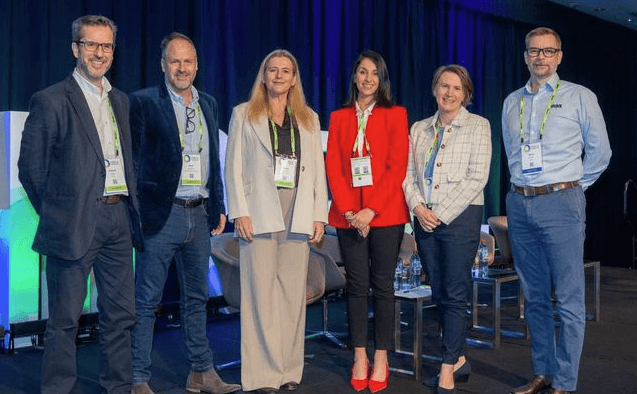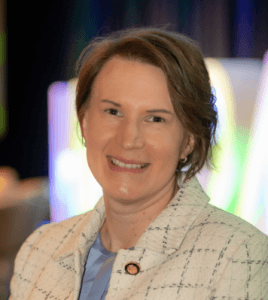We’re all in it together – a message from Tier 1
Martin Sinclair Sep 09

HAYLEY GILMOUR IS HEAD OF COMMERCIAL – Project Delivery at Laing O’Rourke, a global engineering and construction company delivering state-of-the-art infrastructure and buildings projects for clients in the UK, Middle East and Australia. She’s a qualified quantity surveyor with more than 20 years, experience in the construction industry. In June, Hayley joined our expert panel for HIRE24’s Future of Hire session.
“Many of the challenges we have in our individual organisations are often cross-industry issues and when we knowledge share and collaborate, we find we’re on the same journey and can drive greater impact together.” She’s referring to issues such as ESG, sustainability, technology and talent where she believes it ‘absolutely makes sense’ to connect and collaborate with customers, suppliers and other partners to learn from one another and improve the industry.
 “There’s no IP around safety and there shouldn’t be any IP in what we’re trying to do from a sustainability perspective,” says Hayley. “We’re all going to benefit as humans if we have a safe and sustainable industry, so it’s quite comforting to realise that we’re all trying to help each other.”
“There’s no IP around safety and there shouldn’t be any IP in what we’re trying to do from a sustainability perspective,” says Hayley. “We’re all going to benefit as humans if we have a safe and sustainable industry, so it’s quite comforting to realise that we’re all trying to help each other.”
That spirit of collaboration extends to how hiring could also help ease some of the most common ‘pain points’ in the construction industry.
“As an industry, we are usually pretty late in sharing our views as to what it is that we would like to do,” she says. “We usually get a commission from a client, do the design and then turn our minds to construction.”
“It might be that we’ve got a really complex bridge or hospital that we’re building and we don’t leave a space to come up with innovative ideas or we come in with our own pre-fixed opinions which don’t allow the space and time for the hire industry to really bring their own ‘smarts’ to the project.”
She says it’s a missed opportunity, especially given the knowledge and learnings hire companies could bring from their vantage point of working across multiple industry sectors. That’s especially the case with sustainability as companies seek innovative, cost-effective solutions to help reduce their GHG emissions. “We’ve all been looking at our scope one and two emissions targets where we implement clear guidance about what we’re trying to do as a contractor,” says Hayley. “We have to be really vocal in what our targets are and what we want to achieve.”
It’s a challenge that involves every part of the supply chain, including hire companies, material suppliers and designers. “We then need to bring our industry partners along for the journey to help us deliver on our obligations and drive industry change together,” she says.
While the construction and hire industry continue to embrace electric, solar and battery energy sources for their equipment, Hayley says there will also be opportunities to contribute to future renewable energy projects. “The industry is going to be very big over coming years so how do we get ‘match-fit’ for the new energy generation sources that are coming — whether it’s solar, hydro or nuclear — and ready to build the infrastructure required?” That means using, for example, portable site accommodation that can be moved to different locations when building
transmission lines or wind farms.
But if the industry is to successfully deliver on these projects of the future, attracting and retaining a skilled workforce will be key. Hayley says that for the many young
people coming into the industry, there’s an acute focus on the sustainability credentials of their employer and the projects they work on. “There’s an absolute expectation from younger people,” she says. “I think they come in and can be a little disappointed if it hasn’t yet got the traction they’re expecting.” Digital literacy will also be critical. “Digital is a big driver as it helps to remove
tasks that are not fulfilling, those repetitive, monotonous tasks that rarely increase skill levels,” says Hayley. “That will, by default, help solve some of the skill shortages we face.”
But while digital technology is already used on many levels to do things better, faster and cheaper, it’s also predicting what could happen if things don’t go to plan.
“For example, we use a safety tool that tells us when someone is entering a workspace in a crash zone on a piece of machinery,” says Hayley. “So we’ll be looking for what else could hire organisations do for their customers in a digital space?” Finally, it means attracting more people into the industry and ensuring there are viable career paths on offer. It’s a challenge that also resonates in the hire industry. “Many industries are suffering from skill shortages, so how do we ensure that a career in construction carries the same kudos as being a lawyer or doctor and attracts the people and skills we need?” One way is to go to the source and shift the perception through education in schools. As part of their push to increase the talent
pipeline of the future, Laing O’Rourke builds relationships with local schools. The focus is on STEM (science, technology, engineering, maths) and it’s primarily targeted at girls, providing opportunities to visit the project and gain a better understanding of the careers on offer during their influential high school years. Hayley says it’s helping to change perceptions about the construction industry… and not just for girls. “I think there’s also a piece where we can show to male students that successful careers do exist in construction.”










